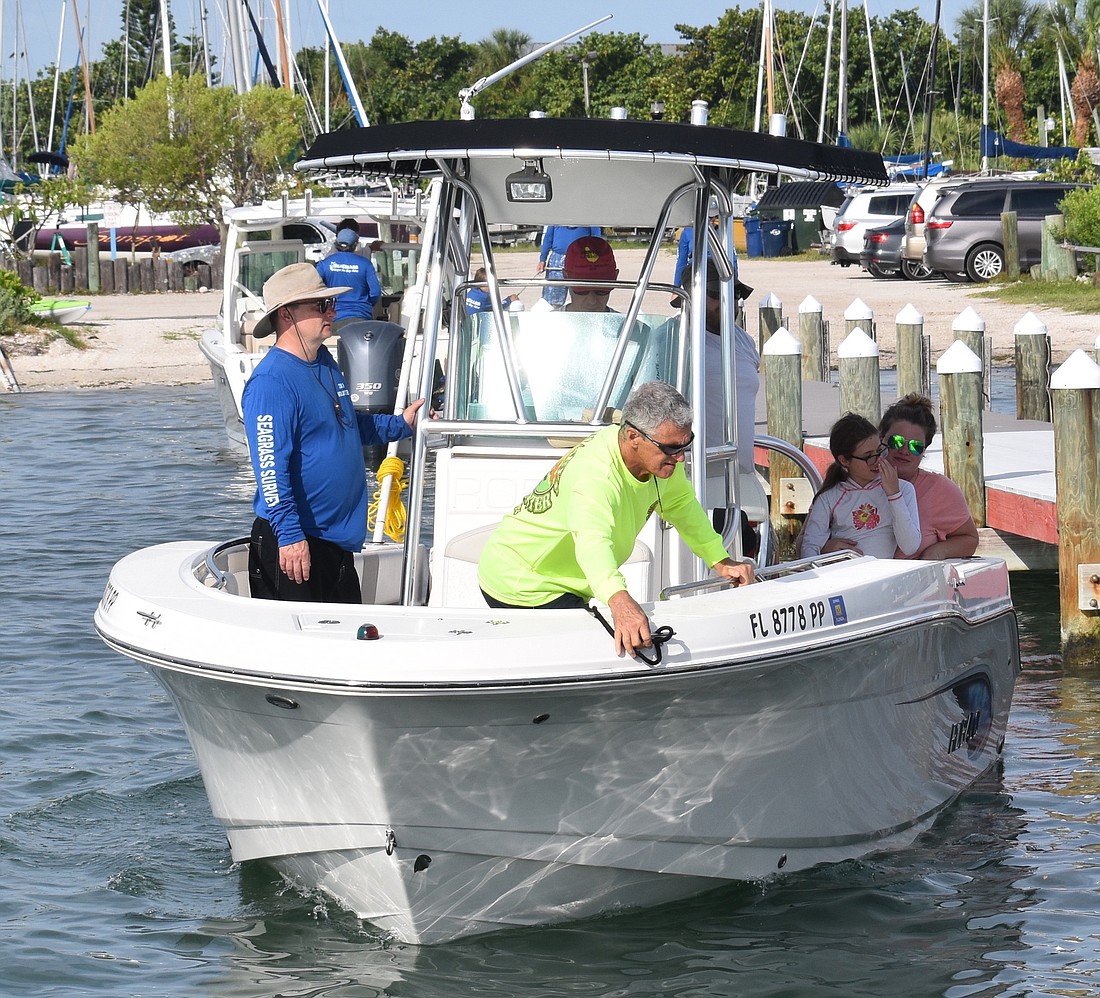- July 26, 2024
-
-
Loading

Loading

The results are in, and Sarasota Bay seagrass is in decline, according to an annual study.
More than 100 volunteers turned out in May for the 2019 Seagrass Survey, hosted by Sarasota County and Sarasota Bay Estuary Program. After paddling out and diving into Sarasota Bay to collect data, researchers found that in the five years that seagrass has been surveyed, the seagrass beds in Sarasota Bay have become more sparse.
Seagrass is an important part of bay habitat, said Sheila Scolaro, Sarasota County’s sampling and outreach coordinator. It provides habitat for marine life, stabilizes sediment and captures about 27 million tons of carbon each year.
Seagrass is sensitive to alterations in water quality, particularly those stemming from nitrogen increases as a result of fertilizers, wastewater and pet waste. Additionally, elevation in nutrients stimulates algae blooms, which can reduce light necessary to sea grass growth.
It is for these reasons that seagrass is an indicator of water quality.
“Seagrass is considered the canary in the coal mine, and it’s often overlooked because it’s underwater, and not many people stick their head under water,” Scolaro said.
While examining Sarasota Bay’s seven regions, researchers collected information on seagrass abundance, sediment characteristics and algal coverage.
Beginning in 2015, seagrass beds were becoming more and more dense, topping out in 2018 when 60% of sites were considered “dense.” However, in 2019, roughly 30% of sites were considered dense.
Additionally, shifts in seagrass species abundance were also recorded. There are three main types of seagrass in Sarasota Bay: Thalassia testudinum (turtle grass), Syrungodium filiform (manatee grass) and Halodule wrightii (shoal grass).
Researchers recorded an increase of turtle grass and shoal grass but a sharp decrease in manatee grass from about 32% of coverage in 2018 to 12% in 2019.
Although this shift could be a signal of economic stress, Scolaro said it is common to see a fluctuation in species. Because manatee grass is on the deeper edge of seagrass beds, Scolaro said the light might not be reaching as far down as in the shallow.
Algae is commonly associated with nutrient pollution, such as nitrogen enrichment. Nutrients can naturally increase in estuaries because of events including red tide or hurricanes.
Despite last year’s red tide outbreak and disruption from Hurricane Irma, the percent of sites with algae has decreased annually since 2015. Nearly 98% of sites had algae in 2015, and that number is now down to 52%. This decrease, Scolaro said, means there will be less harmful nutrients in the water, and seagrass will receive more sunlight.
Epiphytes are small plants and animals that grow on seagrass blades. In small amounts, they can help an ecosystem by providing food for the large animals. However, if there are too many, they can keep seagrass from receiving necessary sunlight, which causes blades to decay.
Epiphyte coverage has steadily increased since 2015. In its inaugural year, the survey indicated roughly 4% of sites had “extreme” epiphyte growth. Now that number sits at 22%. The cleanest blades occurred near the northern ends of Sarasota County, away from major channels and freshwater exposure.
If these trends are continued, Scolaro said it could have an impact on not only the environment but also the county’s economy. Sarasota Bay Estuary Program research estimates that seagrass habitats are worth $11.8 billion in fishing and marine commerce across the state.
“I think if Sarasota County continues to see this decline, it will start to have impacts on our tourism [and] our fishing industry because there’s less habitat for the fish to spawn and eat,” Scolaro said.
Although the area is currently in decline, John Ryan, Sarasota County environmental manager for stormwater and utility, said it is normal for habitats to contract and expand throughout the years. What is most important is that the county is monitoring this trend, he said.
“This reminds us that we need to keep an eye on things,” Ryan said. “We want to detect changes early, so we’re informed. We’d hate to wait until there’s some big change that we don’t like, and it’s too late to do anything about it.”